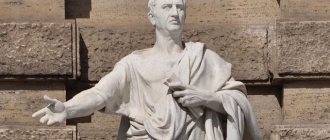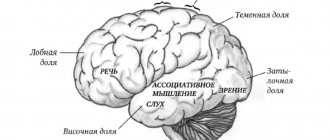Leadership theory appeared simultaneously with the beginning of the development of management as a separate science. In the 1920s, researchers began to create a number of theories that explain the emergence of leadership in various social groups: situational theory, behavioral theory, functional theory, integral theory, etc.
Many famous philosophers from Plato to Plutarch have tried to find common qualities that leaders possess. They were confident that the foundations of leadership lie in individual personality traits. Is it really? What does modern management theory say about leadership, and what does the emergence of informal leaders depend on?
Who is a leader?
In any team, group of people or society, the role of the leader comes to the fore. This is a person who exercises leadership functions (formally or informally) and enjoys the respect and trust of others. An informal leader does not have authority, but can have a more tangible influence on the actions of a group or team.
The “leader” must be separated from the “manager”. The main differences are as follows:
- the leader in the group plays the role of a regulator of interpersonal relations, while the leader acts as a regulator of official relations;
- leadership arises in the microenvironment, and the “leader” refers to the entire environment of social relations, i.e., the macroenvironment;
- the leader makes decisions according to a more complex scheme, including circumstances that are not relevant to a specific group;
- leadership may depend on the mood of the group (fickle).
Leadership cannot by itself replace management. The best option is to complement each other. When a team leader is a leader, he fulfills his authority and influences group members: sets goals, inspires, motivates. Otherwise, the leader may encounter resistance within the team - competing with the influence of the informal leader of the group.
Leader-organizer
This leadership style is characterized by a good perception of the needs of the team. He takes active steps to protect the interests of the group and puts them on the same level as his own. Among the striking qualities of this type of leadership in psychology is the ability to convince people, motivate them, organize them to perform a specific task, and correctly distribute roles. If it is necessary to express disapproval of the actions of a member of the team, the leader-organizer does this without compromising self-esteem.
Such a personality and such a liberal leadership style always comes to the fore in informal groups.
Components
Domestic psychologists believe that leadership has 3 components:
- Emotional - each group member can turn to the leader with their problems. He is called the soul of the team.
- Business person - knows how to provide connections, organize interaction, and achieve results. These are the “hands of the group.”
- Erudite - has answers to all questions, easily finds the necessary information. This is the “brain of the team.”
Typically, a successful leader combines two components. The ideal one, which has all three components, is very rare.
Leader-Creator
The designated management and leadership style can inspire people, interest them in a new idea, and offer to take on a task that may seem impossible to other group members. Such a person always sees new things and easily takes on complex or even dangerous projects. His style of behavior is not to command, but only to invite to discussion.
The rest of the group will never say that the leader makes decisions alone. He always relies on interest, consults with the rest of the team, and presents his arguments to achieve the goals of the organization.
Personality typologies
Types of leadership depend entirely on personality traits, self-esteem and the complexity of the self-concept. According to this theory, there are 4 types of leaders.
- The apolitical type is inherent in a person with high self-esteem and a complicated self-concept. He processes new information and presents it in such a way as not to overstep himself.
- A pragmatic leader has low self-esteem and a complicated self-concept. Behaves in accordance with the conditions of feedback from others. Listens to the opinions of others and takes criticism seriously. He often engages in self-flagellation, convicting himself of mistakes.
- Ideologist - he is characterized by high self-esteem and low complexity of the self-concept. Practically does not react to the problems of others. Focused only on satisfying your needs. Characterized by tough behavior.
- An indeterministic leader - he is characterized by low self-esteem and a low level of self-concept. His leadership styles are based on the influence of certain social factors.
Leader-fighter
Leaders-fighters always stand out in the team for their qualities. They are confident in their strength and have an “iron” will. These types of leadership in management are characterized as individuals who do not hesitate to take on any task, regardless of its degree of complexity or danger. Wrestlers, by their nature, are not inclined to make concessions. They clearly follow the intended path and defend the decision made. Sometimes their actions can be described as “the madness of the brave,” since sometimes they do not have time to carefully think through the plan of action and foresee possible difficulties.
Leadership concept
There is no exact definition of the concept of “leadership”. Some say it is a way of influencing and controlling, others say it is the ability of one person to motivate others to work hard. First of all, leadership combines:
- strength of character;
- the will to win;
- wonderful gift of persuasion;
- active desire for success;
- willingness to take responsibility for the actions of others;
- ability to interact with people, etc.
The advantages of leadership are that it gives freedom of action, respect from other people, and the joy of doing what you love. It provides spiritual and personal growth. Gives a person satisfaction and self-esteem, because people trusted him, confidence in their capabilities and strengths.
Leadership manifests itself in different areas of life - politics, business, sports. This is part of family life, because there should always be a leader in the family. Leadership is especially important in extreme situations, since only an organizing principle (leadership) can ultimately lead to control over the situation.
A leader can have both positive and negative influences
Types of leadership in psychology
Psychologists and psychoanalysts carefully study manifestations of leadership as the ability to evoke feelings of admiration, respect, trust and even adoration. Among group members, such feelings towards the leader arise unconsciously. Depending on the characteristics of the leader’s personality, the following types of leaders and leadership styles in psychology are distinguished.
- Autocratic. Characterized by quick and individual decision-making, and the leader’s strict power over the group. Shows best results in moments of crisis.
- Business. A leader takes on the role of leading a team to accomplish a specific task. Most often, these are ambitious people with clear motivation who want to move up the career ladder or in the social hierarchy and exhibit leadership qualities.
- Democratic. Democratic leadership style involves active participation in decision making for all group members. Democratic leaders are creative, inspiring, and concerned about creating optimal working conditions.
- Relationship-oriented leadership. The basis is support for team members, concern for their development and effectiveness. This leadership style encourages teamwork and successful collaboration.
- Serving. Characterized by managing people by providing them with assistance. The leader provides honest and reasonable leadership, similar to democratic leadership.
- Indifferent. It is characterized by providing group members with complete freedom of action, which is characteristic of groups of experienced, independent and proactive people.
- Problem-oriented. Aimed at performing a specific task. In this model, leaders perform the tasks of setting goals, developing methods for solving them, distributing responsibilities, and controlling.
- Charismatic. It is based on the inspiration of group members, awakening their enthusiasm. The leader's personality comes to the fore and his interests are placed first in relation to the interests of the group.
- Transformational. It is built on motivating the team to achieve 100% results. The leader focuses on the effectiveness of interaction between group members and takes care of the implementation of common goals and interests. In business, this model is considered the most successful.
Main types
If we consider the management process as a leader-subordinate relationship, types of leadership are based on two principles.
- Authoritarian rule.
- Democratic.
An authoritarian leadership style involves concentrating all power in the hands of one person. The leader personally chooses the goals and methods of achieving them. Communications between led people are minimized and are completely controlled by the leader. Subordinates are suppressed, initiative is not welcomed. The main instrument of government is fear of punishment.
A democratic leadership style involves the active participation of employees in working towards set goals; initiative is welcomed. The responsibility of led people is much higher than under authoritarian rule.
There is another classification developed by M. Weber. This is the leading typology of leadership today.
- Traditional type of government - the concept of leadership is based on the traditions of a particular social or cultural group, its habits, rituals. Power is transferred by right of inheritance. Only someone born into a family of rulers can become a leader.
- The rational type is based on the legal norms established in a particular society. The leader is chosen according to these norms. The rights and obligations of the ruling person are also regulated by generally accepted legislation.
- Charismatic type. Its basis lies in the exclusivity of the leader’s face. The combination of a person’s real qualities and those endowed by the society of led followers is taken into account, while the personal qualities of the leader play a secondary role in management.
According to Weber, the leading type of government is charismatic, since it is not tied to the past and involves development, that is, a transition to a rational type.
Leadership styles in organizational management
In terms of the role of leadership in an organization, there are 3 types of leadership:
- Business leadership. The basis is the implementation of production tasks. The leader is competent in the professional field and demonstrates the following qualities: the ability to solve complex organizational problems, business acumen, and efficiency. This leadership style in innovation is based on experience and business authority.
- Emotional leadership. Implemented on the basis of human sympathies within the team. An emotional leader in a group, as a rule, inspires the trust of others, inspires confidence, and is able to relieve psychological tension in the team.
- Situational leadership. It appears unstable depending on the specific situation. May combine signs of emotional and business leadership. Example: organizing the removal of people from a building in case of fire.
Each classification of leaders, leadership styles and their characteristics has the right to life. Scientists continue to work in this area, so over time new species and types will appear.
Psychological styles
Leadership models are based on psychological characteristics of temperament. Classification of leadership according to D. Caserich identifies 4 styles:
- intuitive-emotional;
- intuitive-logical;
- sensory-decisive;
- sensory-perceptive.
Intuitive-emotional
The leader is a kind of catalyst for stimulating the growth of led people. Such a leader is attentive to the problems of his subordinates and tries to redirect their personal potential for the common good. For him, the psychological comfort of his employees comes first.
Problems that arise during work are perceived by the leader as a personal defeat. Because of this management style, employees often become opinionated and fail to complete work on time.
Intuitive-logical
Such a leader cares little about the feelings of others. All his work is based on the creation and development of plans. He fiercely defends any point of view. Doesn't need followers too much.
He chooses people to subordinate himself on his own, and does not keep anyone nearby by force.
Intolerant of people with low intelligence. Presents the existing picture as more complex than it actually is.
Sensory-decisive
Plans everything in advance. Requires strict adherence to the plan. The main criterion in his work is the preservation of established rules, material resources, and traditions. The order of the established system is the main value and does not accept new ideas.
Such a leader takes the responsibilities of himself and those around him very responsibly. The disadvantages of such a government are the leader’s narrow-mindedness in matters of introducing innovations and totalitarian preferences in communicating with subordinates.
Sensory-perceptive
Suitable for use in law enforcement agencies and emergency services. The leader quickly finds a solution, relying only on his feelings and knowledge. Does not always respect established laws.
In routine matters, this leadership style is completely useless. And the leader himself, endowed with quick reactions, cannot sit still.










